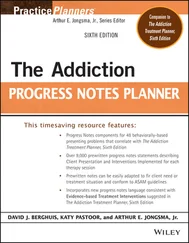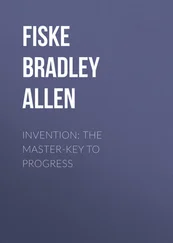The goal of our series is to provide practitioners with the resources they need in order to provide high-quality care in the era of accountability. To put it simply: We seek to help you spend more time on patients and less time on paperwork.
ARTHUR E. JONGSMA, JR.
Grand Rapids, Michigan
For this 6th edition of the Adult Psychotherapy Progress Notes Planner we enjoy the benefits of a generational change in the contributing author of updated material. Our previous contributing author of updated content, David Berghuis, has mentored his daughter, Katy Pastoor, a master's level psychologist, to provide the revised content. Thank you, Katy, for your excellent work following in the footsteps of your very capable father. She has created new content where needed based on the updates made to the companion 6th edition of The Adult Psychotherapy Treatment Planner .
A.E.J.
PROGRESS NOTES INTRODUCTION
ABOUT PRACTICE PLANNERS ®PROGRESS NOTES
Progress notes are not only the primary source for documenting the therapeutic process, but also one of the main factors in determining the client's eligibility for reimbursable treatment. The purpose of the Progress Notes Planner series is to assist the practitioner in easily and quickly constructing progress notes that are thoroughly unified with the client's treatment plan.
Each Progress Notes Planner :
Saves you hours of time-consuming paperwork.
Offers the freedom to develop customized progress notes.
Features over 1,000 prewritten progress notes summarizing patient presentation and treatment delivered.
Provides an array of treatment approaches that correspond with the behavioral problems and DSM-IV and DSM-5 diagnostic categories in the corresponding companion Treatment Planner.
Offers sample progress notes that conform to the requirements of most third-party payors and accrediting agencies, including JCAHO, COA, CARF, and NCQA.
HOW TO USE THIS PROGRESS NOTES PLANNER
This Progress Notes Planner provides a menu of sentences that can be selected for constructing progress notes based on the behavioral definitions (or client's symptom presentation) and therapeutic interventions from its companion Treatment Planner . All progress notes must be tied to the patient's treatment plan—session notes should elaborate on the problems, symptoms, and interventions contained in the plan.
Each chapter title is a reflection of the client's potential presenting problem. The first section of the chapter, “Client Presentation,” provides a detailed menu of statements that may describe how that presenting problem manifested itself in behavioral signs and symptoms. The numbers in parentheses within the Client Presentation section correspond to the numbers of the Behavioral Definitions from the Treatment Planner .
The second section of each chapter, “Interventions Implemented,” provides a menu of statements related to the action that was taken within the session to assist the client in making progress. The numbering of the items in the Interventions Implemented section follows exactly the numbering of Therapeutic Intervention items in the corresponding Treatment Planner .
All item lists begin with a few keywords. These words are meant to convey the theme or content of the sentences that are contained in that listing. The clinician may peruse the list of keywords to find content that matches the client's presentation and the clinician's intervention.
It is expected that the clinician may modify the prewritten statements contained in this book to fit the exact circumstances of the client's presentation and treatment. To maintain complete client records, in addition to progress note statements that may be selected and individualized from this book, the date, time, and length of a session; those present within the session; the provider; the provider's credentials; and a signature must be entered in the client's record.
A FINAL NOTE ABOUT PROGRESS NOTES AND HIPAA
Federal regulations under the Health Insurance Portability and Accountability Act (HIPAA) govern the privacy of a client's psychotherapy notes, as well as other protected health information (PHI). PHI and psychotherapy notes must be kept secure and the client must sign a specific authorization to release this confidential information to anyone beyond the client's therapist or treatment team. Further, psychotherapy notes receive other special treatment under HIPAA; for example, they may not be altered after they are initially drafted. Instead, the clinician must create and file formal amendments to the notes if he or she wishes to expand, delete, or otherwise change them.
Does the information contained in this book, when entered into a client's record as a progress note, qualify as a “psychotherapy note” and therefore merit confidential protection under HIPAA regulations? If the progress note that is created by selecting sentences from the database contained in this book is kept in a location separate from the client's PHI data, then the note could qualify as psychotherapy note data that is more protected than general PHI. However, because the sentences contained in this book convey generic information regarding the client's progress, the clinician may decide to keep the notes mixed in with the client's PHI and not consider it psychotherapy note data. In short, how you treat the information (separated from or integrated with PHI) can determine if this progress note planner data is psychotherapy note information. If you modify or edit these generic sentences to reflect more personal information about the client or if you add sentences that contain confidential information, the argument for keeping these notes separate from PHI and treating them as psychotherapy notes becomes stronger. For some therapists, our sentences alone reflect enough personal information to qualify as psychotherapy notes and they will keep these notes separate from the client's PHI and require specific authorization from the client to share them with a clearly identified recipient for a clearly identified purpose.
ANGER CONTROL PROBLEMS
CLIENT PRESENTATION
1 Episodic Excessive Anger (1) 1 The client described a history of loss of temper in response to specific situations.The client described a history of loss of temper that dates back many years, including verbal outbursts and property destruction, typically related to specific emotional themes.As treatment has progressed, the client has reported increased control of his/her/their situational episodic excessive anger.The client has had no recent incidents of episodic excessive anger.
2 General Excessive Anger (2)The client shows a pattern of general, excessive anger across many situations.The client does not appear to be experiencing anger in response to specific issues, but as a general pattern.As treatment has progressed, the client has verbalized insight into his/her/their pattern of excessive anger.The client has made progress in controlling his/her/their pattern of excessive anger.
3 Cognitive Biases Toward Anger (3)The client shows a pattern of cognitive biases commonly associated with anger.The client makes demanding expectations of others.The client tends to generalize labeling the targets of his/her/their anger.The client tends to have anger in reaction to perceived slights.As treatment has progressed, the subject displays decreased patterns of cognitive biases associated with anger.
4 Evidence of Physiological Arousal (4)The client displayed direct evidence of physiological arousal in relation to his/her/their feelings of anger.The client displays indirect evidence of physiological arousal related to his/her/their feelings of anger.As treatment has progressed, the subject's level of physiological arousal has decreased as anger has become more managed.
Читать дальше












